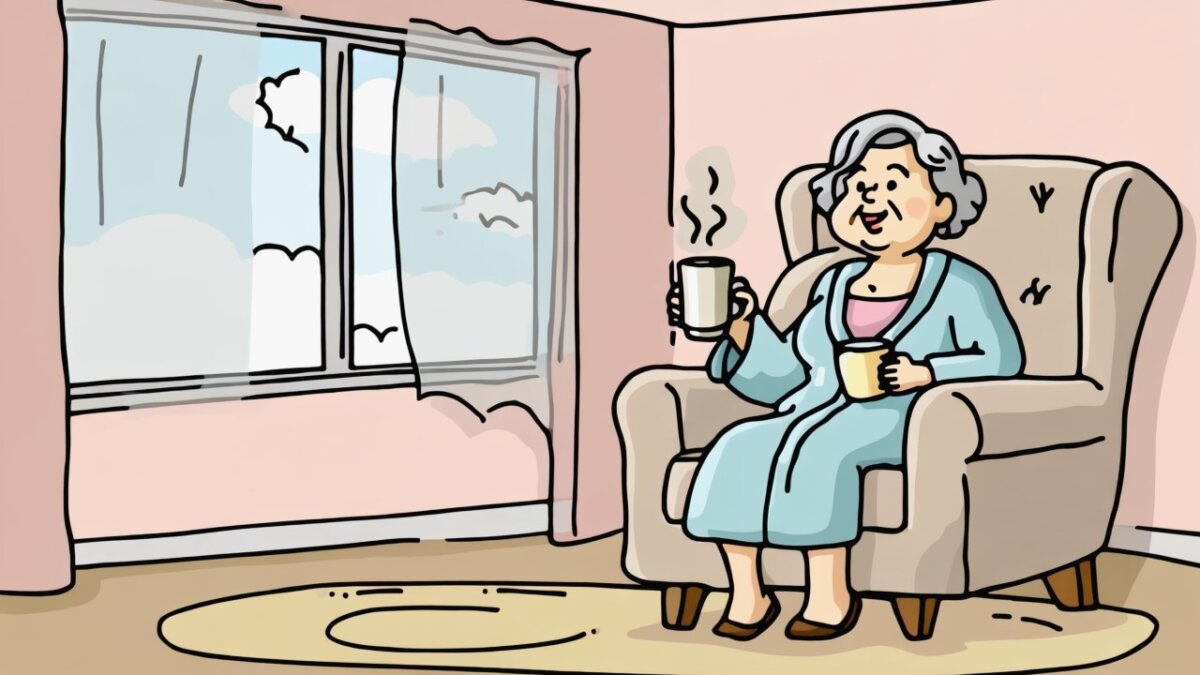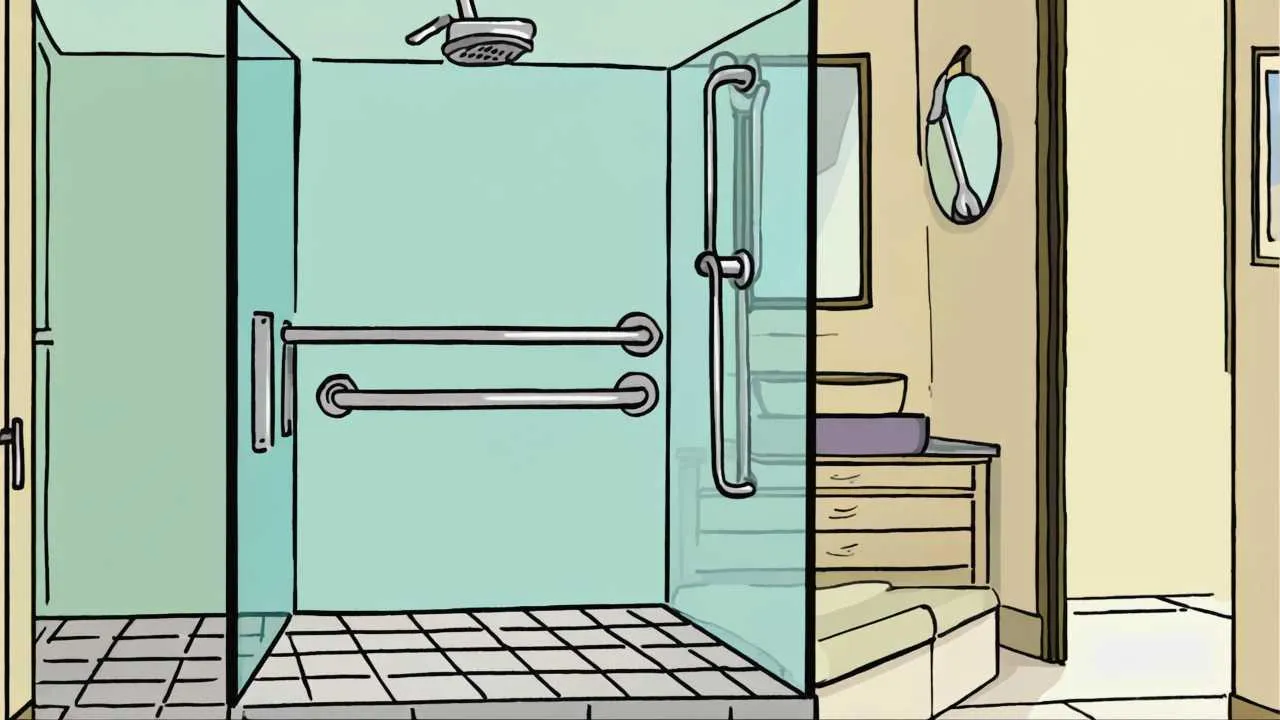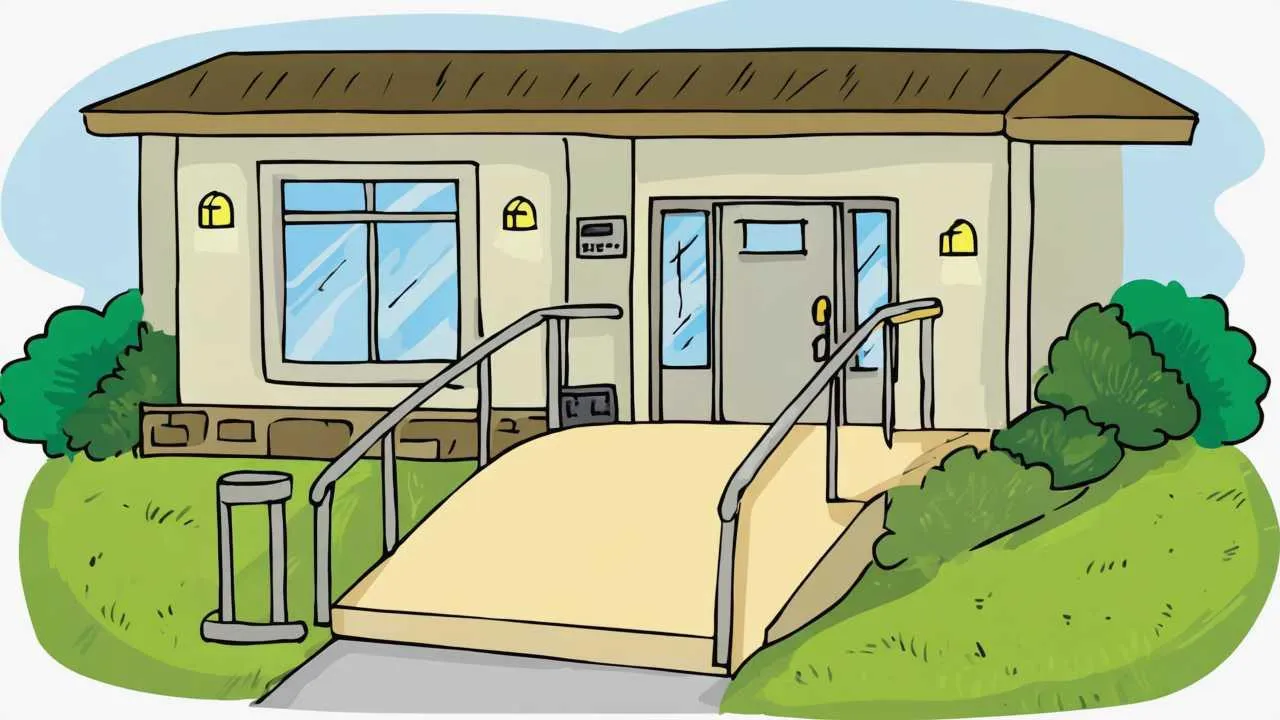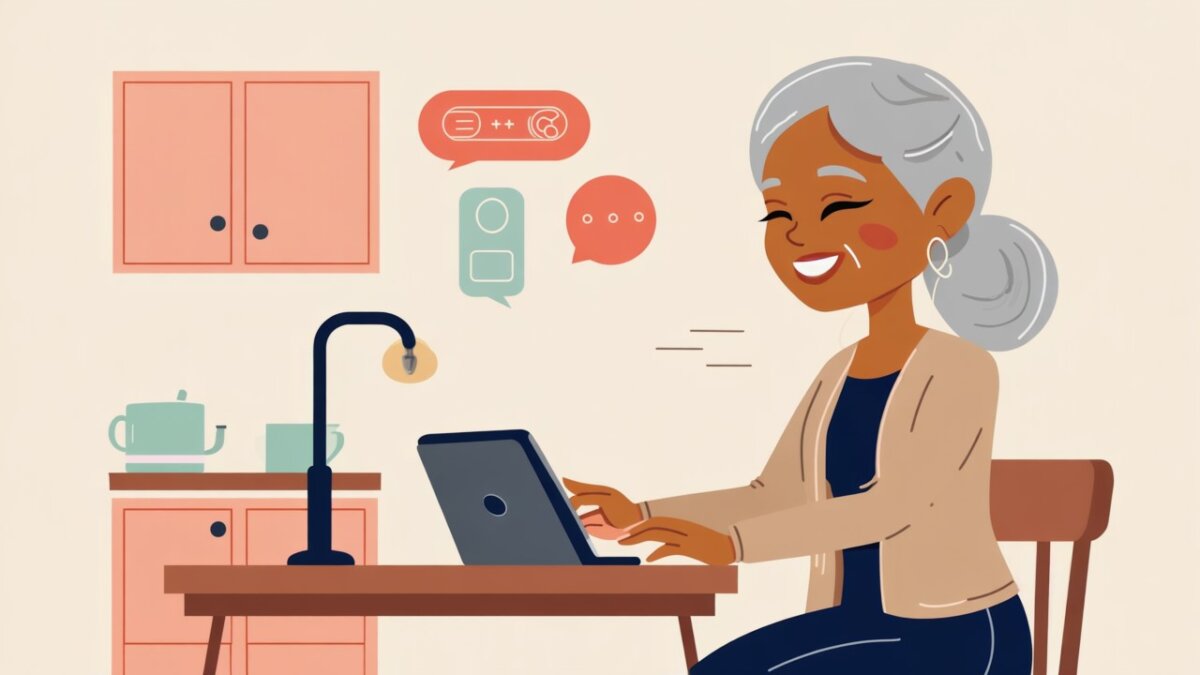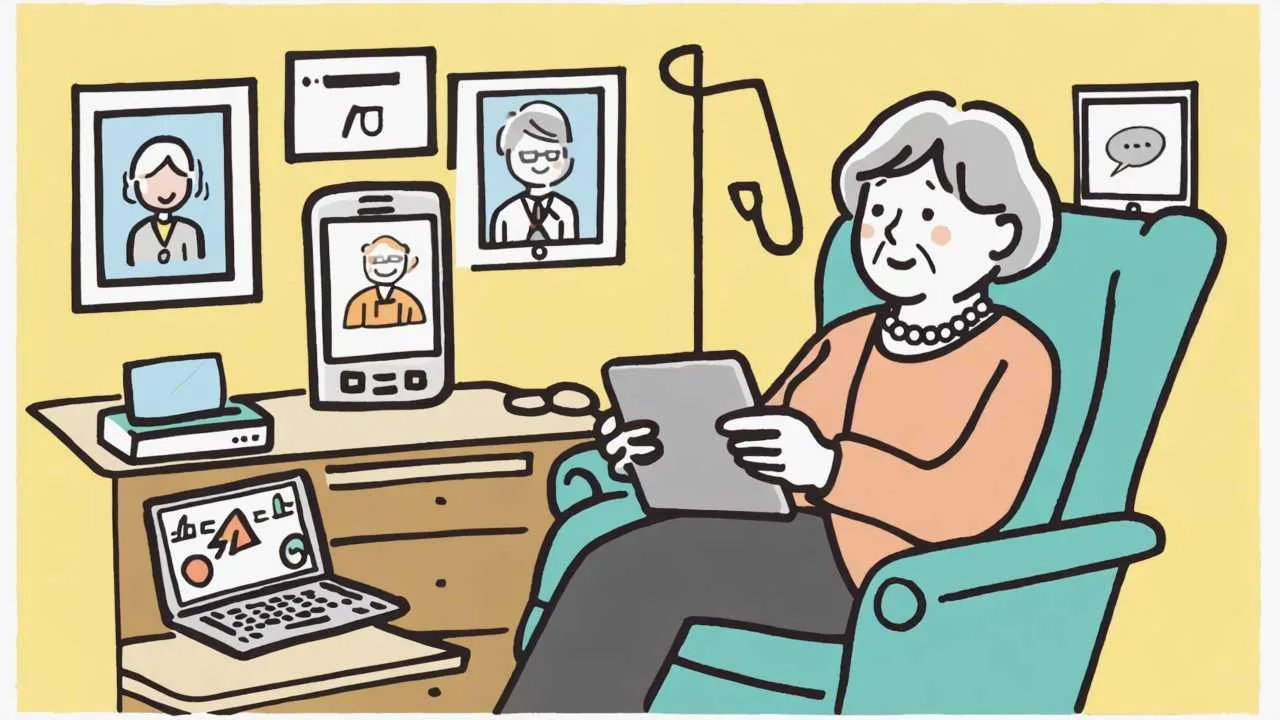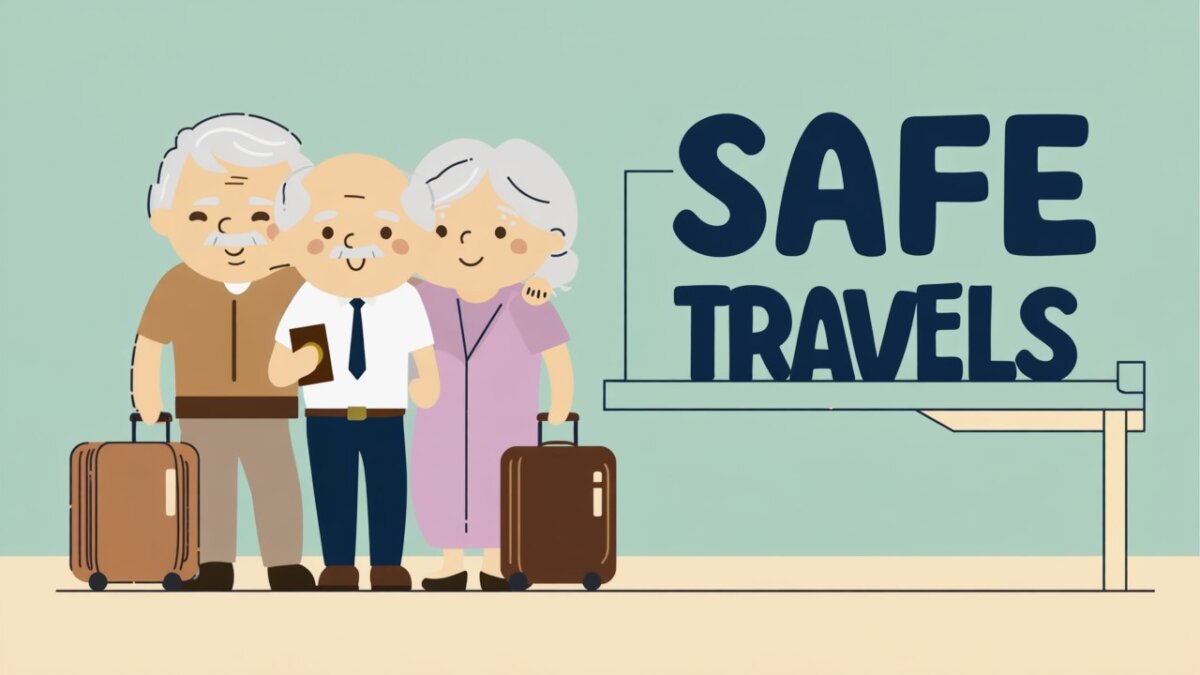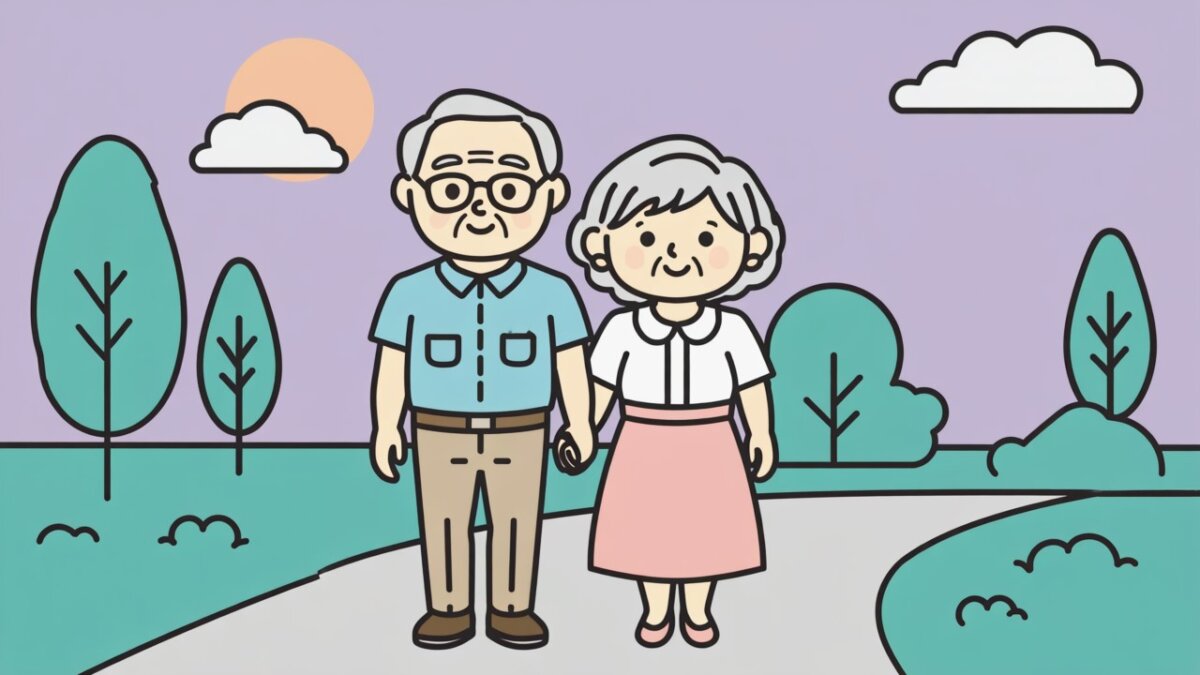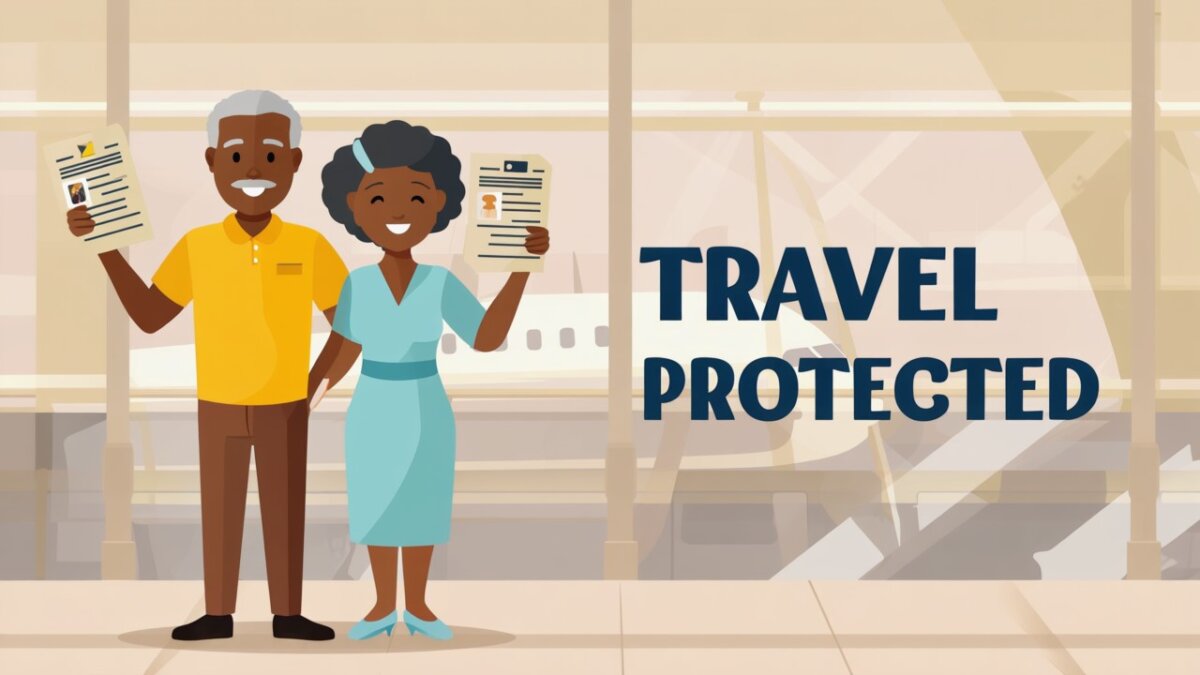
Start your day with intention and calm through simple morning rituals that set the tone for peaceful, productive retirement living
Visual Art by Artani Paris | Pioneer in Luxury Brand Art since 2002
How you start your morning determines the entire day’s emotional trajectory—particularly in retirement when daily structure shifts from external work schedules to self-directed routines. Seniors in their 60s who establish consistent morning rituals report 47% higher life satisfaction and 38% lower anxiety levels compared to those with chaotic or reactive mornings, according to 2024 research from Stanford Center on Longevity. These morning routines aren’t complicated wellness regimens requiring expensive equipment or intense discipline—they’re simple, repeatable patterns creating psychological security, physical wellbeing, and the calm mindset essential for enjoying retirement. This guide reveals the specific morning practices successful retirees swear by: gentle movement upon waking, mindful hydration, natural light exposure, purposeful breakfast, spiritual or reflective time, connection activities, and intentional planning. Each element serves multiple purposes—physical health, mental clarity, emotional stability—while fitting naturally into 60-90 minute morning windows that feel peaceful rather than rushed.
Why Morning Routines Matter More in Your 60s
Retirement eliminates the external structure work provided for 40+ years. Without alarm clocks dictating wake times, commutes forcing movement, and workplace schedules creating routine, many retirees drift into irregular patterns that undermine wellbeing. Sleeping until random times, skipping breakfast, staying in pajamas all day, and reactive scrolling through phones create chaos that triggers anxiety and depression. A 2024 Mayo Clinic study found that retirees without morning routines experience 52% higher rates of depression within the first two years of retirement compared to those maintaining structured mornings.
Circadian rhythms—your body’s internal clock—weaken with age, making consistent wake times and morning light exposure increasingly important for sleep quality, energy levels, and mood regulation. Adults over 60 who wake within a 30-minute window daily and expose themselves to morning light report better nighttime sleep, fewer afternoon energy crashes, and more stable moods. Morning routines reinforce these biological rhythms, creating physiological benefits extending throughout the day and improving sleep the following night.
Morning routines create psychological benefits beyond physical health. Completing a series of predictable, manageable tasks provides accomplishment and control—essential feelings when retirement disrupts identity and purpose. Even simple routines like making the bed, drinking water, and eating breakfast create momentum that carries into the rest of the day. This “small wins” effect documented by behavioral psychologists shows that initial morning successes predict continued productivity and positive mood across subsequent hours.
The transition from work to retirement requires replacing lost structure with intentional self-structure. Morning routines provide this foundation without feeling restrictive. Unlike rigid schedules, morning rituals offer flexible frameworks—the sequence matters more than exact timing. You might wake at 6:30 one day and 7:00 another, but following the same pattern (stretch, water, dress, breakfast, read) creates stability within flexibility. This balance prevents both chaos and rigidity.
Social connection opportunities concentrate in mornings for many retirement communities and activities—walking groups, exercise classes, volunteer shifts, religious services. Establishing morning routines positions you to participate in these social activities rather than waking too late or feeling too disorganized to engage. Social isolation accelerates cognitive decline and increases mortality risk; morning routines that facilitate connection protect against these risks while enriching daily life.
Morning routines prevent “time affluence” from becoming “time poverty.” Retirement provides abundant unstructured time that paradoxically feels wasted without intention. Days blend together, weeks pass unremarked, and retirees report simultaneously having “nothing to do” and feeling time slipped away. Morning routines create daily fresh starts—each morning renews opportunity for meaningful engagement. This temporal structure prevents the drift that makes retirement feel empty rather than full of possibility.
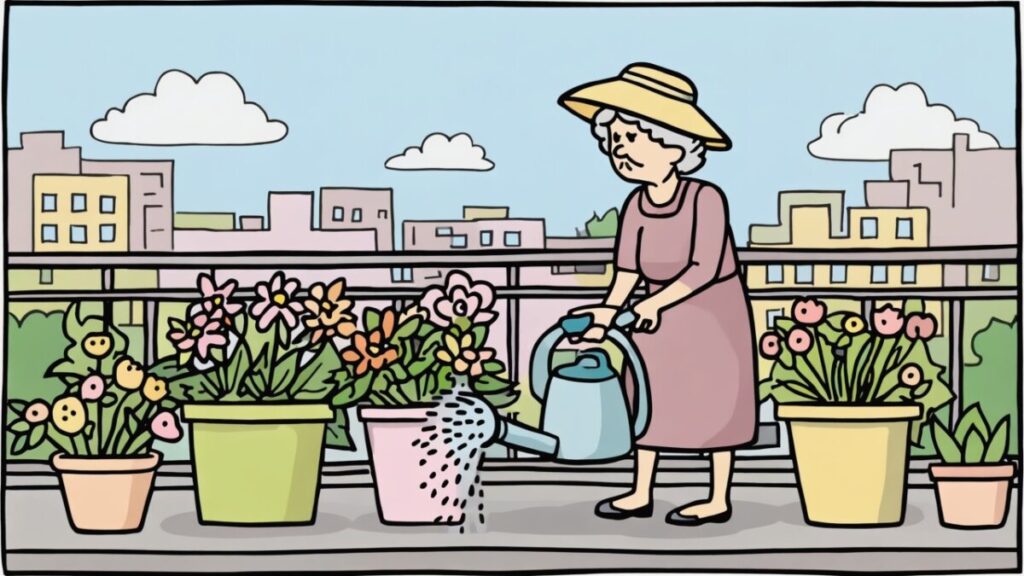

Visual Art by Artani Paris
| Benefit Category | Without Morning Routine | With Consistent Morning Routine | Research Source |
|---|---|---|---|
| Sleep Quality | Irregular, fragmented | 7-8 hours, more restorative | Sleep Foundation 2024 |
| Daily Energy Levels | Afternoon crashes common | Sustained, stable energy | Mayo Clinic Study 2024 |
| Mood Stability | Variable, reactive | 38% lower anxiety | Stanford Longevity 2024 |
| Life Satisfaction | Baseline | 47% higher reported | Stanford Longevity 2024 |
| Depression Risk | 52% higher in first 2 years | Baseline risk | Mayo Clinic 2024 |
| Daily Productivity | Scattered, unfocused | Goal completion 3x higher | Behavioral Psychology 2024 |
Wake at a Consistent Time (Even Without an Alarm)
The foundation of effective morning routines is consistent wake times within a 30-minute window. This doesn’t mean forcing yourself awake at 6:00 AM if you’re naturally a night person—it means choosing a wake time matching your natural rhythm and maintaining it daily, including weekends. Your body’s circadian system thrives on predictability, and consistent wake times anchor all other biological rhythms affecting sleep, digestion, energy, and mood.
Determine your natural wake time by allowing yourself to wake without alarms for 7-10 days while going to bed at a consistent time. Most people naturally settle into a pattern—perhaps 6:30-7:00 AM, or 7:30-8:00 AM. This natural wake time reflects your chronotype (internal biological preference) and should guide your routine schedule. Fighting your chronotype creates unnecessary stress; working with it creates effortless consistency.
Use gradual light and sound rather than jarring alarms if you need wake assistance initially. Sunrise alarm clocks ($40-80) gradually brighten 30 minutes before your target wake time, mimicking natural dawn. These gentle awakenings prevent the stress response triggered by sudden loud alarms. As you establish consistent sleep schedules, you’ll likely wake naturally within 15 minutes of your target time without any alarm—a sign of healthy circadian regulation.
Resist the temptation to “sleep in” dramatically on weekends. Shifting wake times by 2+ hours creates “social jet lag”—essentially giving yourself jet lag every week. This disrupts circadian rhythms, reduces sleep quality, and triggers the Monday morning grogginess many retirees experience even without work obligations. If you want extra weekend rest, go to bed 30-60 minutes earlier rather than sleeping in late. Or allow 30-minute flex—if you normally wake at 7:00, weekend wake times of 7:00-7:30 maintain rhythm without rigid deprivation.
Get out of bed within 15 minutes of waking rather than lingering. While staying in bed feels restful, it actually confuses your brain about bed’s purpose. Beds should signal sleep, not wakefulness. Immediate rising reinforces the sleep-wake boundary, strengthening future sleep quality. If you enjoy morning contemplation, do it in a chair near a window, not in bed. This distinction prevents the “can’t fall asleep” or “wake throughout the night” problems common when beds become multipurpose areas.
Establish a “soft start” preventing the jarring transition from sleep to frantic activity. The first 5-10 minutes should be gentle: sit on the bed’s edge, take three deep breaths, stretch your arms overhead, rotate ankles and wrists, stand slowly. This gradual physical activation prevents dizziness or falls from sudden position changes (orthostatic hypotension) increasingly common after age 60. It also creates psychological transition from sleep consciousness to waking awareness.
Open curtains or blinds immediately upon waking, exposing yourself to natural light even if cloudy. Light is the primary signal regulating circadian rhythms. Morning light exposure (ideally within 30 minutes of waking) suppresses melatonin, increases cortisol and serotonin, and sets your biological clock for optimal energy now and sleep tonight. Aim for 10-30 minutes of natural light exposure—near windows, on a porch, or brief outdoor walk. On very dark mornings, use a light therapy box (10,000 lux, $40-100) for 20-30 minutes while having breakfast or reading.
Avoid checking phones, email, or news immediately upon waking. These activities flood your brain with information, demands, and often stress before you’ve established internal equilibrium. The first 30-60 minutes should focus inward—your body, your thoughts, your home—before engaging external world. This protective buffer prevents reactive, anxious days driven by others’ agendas. Phone checking can wait until after breakfast and morning routine completion.
If you wake earlier than desired occasionally, don’t panic or force yourself back to sleep. Use the extra time for gentle activity—reading, light stretching, journaling. Fighting wakefulness creates stress defeating the purpose. If you wake significantly earlier regularly (4:00-5:00 AM when preferring 7:00 AM), consult your doctor—early morning waking can indicate depression or sleep disorders treatable with medical intervention.
Track your wake times for two weeks using a simple notebook or phone note. Write down actual wake time daily. Patterns reveal whether you’re maintaining consistency or drifting. Most successful routine-maintainers wake within 20-30 minutes of target time 6-7 days weekly. If you’re varying by 2+ hours regularly, identify obstacles—too-late bedtimes, alcohol before bed, bedroom environment issues, or perhaps unrealistic wake time choices fighting your natural chronotype.
Hydrate Immediately: Water Before Coffee
Your body loses 1-2 pounds of water overnight through breathing and minimal perspiration, creating mild dehydration by morning. This dehydration contributes to grogginess, headaches, constipation, and sluggish cognition—symptoms many seniors attribute to aging when they’re actually preventable through proper hydration. Drinking 16-24 ounces of water within 30 minutes of waking rehydrates your body, jumpstarts metabolism, aids digestion, and improves mental clarity.
Keep water on your nightstand or nearby so the first thing you do after sitting up is drink. Room temperature or slightly warm water absorbs faster than cold water and doesn’t shock your system. Some seniors add lemon juice (fresh or bottled) for flavor and vitamin C, or a pinch of sea salt replacing electrolytes lost overnight. The key is making this automatic—the glass or bottle sitting ready eliminates the barrier of walking to the kitchen before hydrating.
Drink water before coffee or tea, not instead of them. Caffeine is mildly dehydrating, so consuming it on an already-dehydrated system amplifies negative effects—jitters, anxiety, digestive upset. Water first provides the hydration foundation allowing you to enjoy coffee’s benefits (alertness, pleasure, ritual) without exacerbating dehydration. Aim for 8-16 ounces of water, wait 15-20 minutes, then enjoy your coffee or tea. This sequence optimizes both hydration and caffeine effects.
Consider warm lemon water as an alternative providing multiple benefits. Squeeze half a fresh lemon into 8-12 ounces of warm (not boiling) water. This combination supports digestion, provides vitamin C, creates alkaline environment in the body, and tastes pleasant without added sugar. Many seniors report that warm lemon water gently stimulates bowel movements—helpful for the constipation issues common with aging. The warmth also feels soothing to throats often dry from overnight mouth breathing.
Avoid sugary drinks, fruit juices, or sweetened coffee as your first beverage. These spike blood sugar on an empty stomach, creating energy surges followed by crashes, increased hunger, and mood volatility. Plain water, herbal tea, or coffee with minimal additions (splash of milk, no sugar) provide hydration and alertness without metabolic disruption. Save sweeter drinks for mid-morning or afternoon if desired, not as the day’s first intake.
Set a daily hydration goal of 6-8 eight-ounce glasses (48-64 ounces total), starting with morning’s 16-24 ounces. As we age, thirst signals weaken—many seniors don’t feel thirsty despite being dehydrated. Scheduled hydration throughout the day prevents this. After morning water, drink 8 ounces with breakfast, 8 ounces mid-morning, 8 ounces with lunch, 8 ounces mid-afternoon, and 8 ounces with dinner (stopping 2 hours before bed to prevent nighttime bathroom trips). This schedule totals 56-64 ounces meeting most seniors’ needs.
Recognize dehydration symptoms often mistaken for aging or illness: fatigue, confusion, dizziness, constipation, dry mouth, dark yellow urine, and headaches. Before attributing these to medication side effects or health conditions, evaluate your hydration. Many seniors improve these symptoms dramatically simply by drinking adequate water. Urine color provides easy monitoring—pale yellow indicates good hydration, dark yellow or amber indicates need for more fluids.
Address concerns about frequent urination that prevent some seniors from drinking adequate water. Yes, proper hydration increases bathroom trips, but the health risks of chronic dehydration (kidney problems, constipation, falls from dizziness, cognitive issues) far outweigh bathroom inconvenience. Your body adjusts within 2-3 weeks of consistent hydration, regulating bladder capacity and frequency. Avoiding fluids to reduce bathroom trips actually irritates the bladder, potentially increasing urgency and frequency.
Modify hydration strategies if you have specific medical conditions. Heart failure or kidney disease may require fluid restrictions—follow your doctor’s specific recommendations. If taking diuretics (water pills), ask your doctor about timing and whether additional electrolyte intake is advisable. For most healthy seniors, morning hydration provides clear benefits without medical risks, but always discuss changes with healthcare providers if you have chronic conditions.
Make hydration visually obvious using a marked water bottle. Fill a 32-ounce bottle each morning and finish it by lunch, refill and finish by dinner. The visual cue prevents forgetting, and the measurement eliminates guessing about intake. Some seniors set phone reminders for hourly sips. Others use apps like WaterMinder or Plant Nanny tracking intake gamified to maintain motivation. Find a system matching your style—the best hydration strategy is the one you’ll actually follow.
Move Your Body Gently for 10-15 Minutes
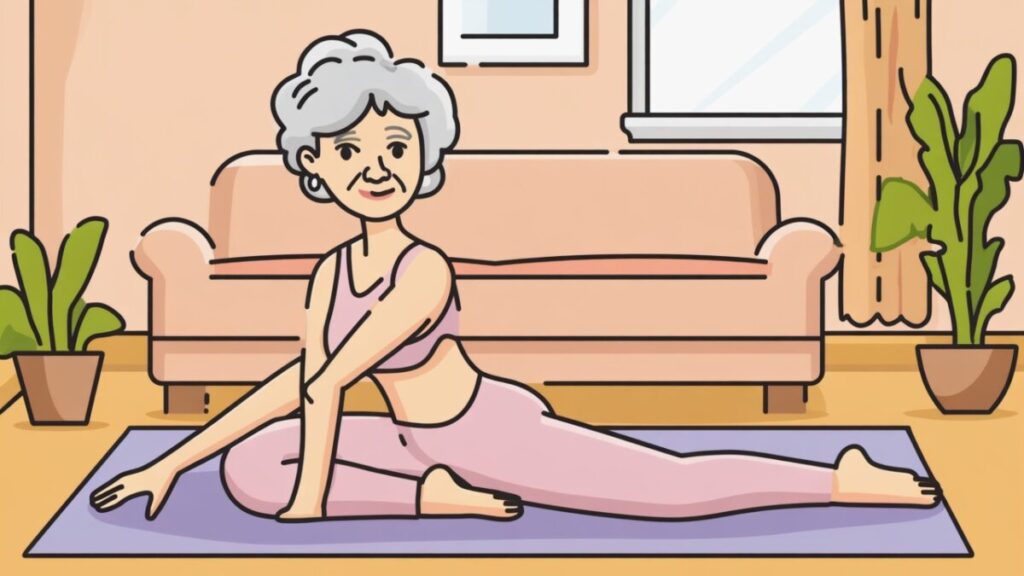

Visual Art by Artani Paris
Eat a Protein-Rich Breakfast Within Two Hours of Waking
Breakfast provides fuel and nutrients after the overnight fast, stabilizes blood sugar preventing mid-morning crashes, and signals to your metabolism that it’s time to function actively. Protein at breakfast particularly benefits seniors—it maintains muscle mass (critical for preventing frailty), creates sustained energy (unlike carbohydrate-only breakfasts), increases satiety reducing unhealthy snacking, and supports neurotransmitter production affecting mood and cognition throughout the day.
Aim for 20-30 grams of protein at breakfast—roughly one serving size. This could be: two eggs plus Greek yogurt, protein smoothie with protein powder and milk, oatmeal made with milk plus nuts, cottage cheese with fruit, or smoked salmon with whole grain toast. Protein doesn’t need to be animal-based—plant proteins like beans, tofu, nuts, and seeds work equally well for those preferring vegetarian options. The key is including substantial protein, not just carbohydrates or fats alone.
Avoid sugar-heavy breakfasts creating energy and mood volatility. Sweetened cereals, pastries, juice, and sugary coffee drinks spike blood sugar rapidly, triggering insulin surges that then crash blood sugar below baseline within 2-3 hours. This crash causes fatigue, irritability, hunger, and cravings for more sugar—a cycle many seniors ride all day without realizing breakfast started it. Choose whole foods with fiber, protein, and healthy fats maintaining stable blood sugar: eggs, plain yogurt, nuts, whole grains, fruit (whole, not juice).
Prepare breakfast the night before if morning energy or motivation feels low. Overnight oats (rolled oats, milk, yogurt, fruit, nuts mixed and refrigerated) require no morning preparation. Hard-boiled eggs made Sunday last all week. Pre-measured smoothie ingredients in freezer bags blend quickly with liquid. Preparing breakfast components the night before removes decision-making and effort from groggy mornings when resistance is highest. You’re making breakfast for tomorrow’s self—a gift ensuring you’ll actually eat well.
Eat breakfast sitting down at a table, not standing at the counter or in front of TV. This mindful eating practice—focusing on your food, chewing thoroughly, noticing flavors and textures—improves digestion, increases satisfaction from smaller portions, and creates a calming ritual. Breakfast eaten while multitasking (watching news, scrolling phone) disappears from awareness. You finish without remembering eating, feeling less satisfied and more likely to overeat later. The 15-20 minutes of focused breakfast eating becomes valuable quiet time starting your day centered.
Include foods supporting specific health needs relevant to seniors. Prunes or high-fiber cereal for constipation prevention. Leafy greens or berries for brain health. Fatty fish or walnuts for omega-3s supporting heart and cognitive function. Dairy or fortified alternatives for calcium and vitamin D supporting bone health. While you can’t solve all nutritional needs at breakfast, thoughtfully chosen morning foods contribute meaningfully to daily nutrient intake affecting quality of life.
Stay hydrated during breakfast continuing the hydration started immediately upon waking. Have water or herbal tea with breakfast, not just coffee. Coffee counts partially toward fluid intake but has mild diuretic effects. The combination of morning water, breakfast fluids, and coffee provides approximately 24-32 ounces of hydration in the first 1-2 hours of your day—a strong start toward the 48-64 ounce daily goal.
Address appetite issues making breakfast difficult for some seniors. Medications, decreased sense of taste/smell, dental problems, or natural age-related appetite reduction make eating breakfast challenging. Start small—a piece of toast with peanut butter and banana. A protein shake if chewing is difficult. Half a breakfast portion if full portions overwhelm. Something is better than nothing. Appetite often increases once you’ve eaten, so starting the digestive process triggers hunger later in the morning when you might finish breakfast or have a substantial snack.
Make breakfast social when possible. Eating with a spouse, roommate, or neighbor transforms the utilitarian act of fueling into social connection. If living alone, call a family member during breakfast, or join friends at a diner or community center for weekly breakfast gatherings. The social aspect increases accountability (you’ll eat because others are), enjoyment, and likelihood of maintaining the routine. Many successful retirees report that regular breakfast dates with friends provide structure and joy in otherwise unstructured weeks.
Allow flexibility in breakfast timing based on natural hunger and daily plans. “Within two hours of waking” provides guideline, not rigid rule. If you wake at 7:00 but aren’t hungry until 8:30, that’s fine—your breakfast window extends to 9:00. Some days you might eat earlier or later based on morning activities. The principle is avoiding prolonged fasting (more than 12-14 hours overnight) or going half the morning without food, both of which create metabolic and energy problems. Flexible adherence to breakfast timing serves you better than rigid rules triggering stress.
| Breakfast Type | Protein Content | Prep Time | Benefits for Seniors |
|---|---|---|---|
| 2 Eggs + Whole Grain Toast | 18g | 10 minutes | Complete protein, fiber, B vitamins |
| Greek Yogurt (1 cup) + Berries + Nuts | 20-25g | 2 minutes | Probiotics, antioxidants, heart-healthy fats |
| Protein Smoothie (powder + milk + banana) | 25-30g | 5 minutes | Easy to digest, customizable, hydrating |
| Oatmeal made with Milk + Almonds | 15g | 8 minutes | Heart health, sustained energy, fiber |
| Cottage Cheese (1 cup) + Fruit | 24g | 2 minutes | High protein, calcium, versatile |
| Smoked Salmon + Cream Cheese + Bagel | 20g | 3 minutes | Omega-3s, brain health, satisfying |
Spend 15-20 Minutes on Spiritual or Reflective Practice
Morning spiritual or reflective time centers your mind, establishes intentions, and connects you to values larger than immediate concerns. This practice takes many forms depending on personal beliefs and preferences—prayer, meditation, journaling, reading inspirational texts, gratitude practice, or quiet contemplation. The common element is stepping back from daily logistics to engage with meaning, purpose, and inner life. Research consistently shows that seniors with regular spiritual or reflective practices report higher wellbeing, better stress management, and stronger sense of life purpose.
Start with just 5-10 minutes if longer periods feel intimidating or uncomfortable. Sit in a comfortable chair near a window with good morning light. Close your eyes or keep them softly focused on a nearby object. Take 10 slow, deep breaths counting them. Notice thoughts arising without judging or engaging them. When you notice your mind wandering (it will), gently return to counting breaths. This simple meditation practice calms the nervous system, increases present-moment awareness, and creates mental clarity. Gradually extend to 15-20 minutes as comfort increases.
Try gratitude journaling writing three specific things you’re grateful for each morning. These should be concrete and varied—not “my family” daily but “my granddaughter’s phone call yesterday,” “the cardinal at my bird feeder,” “my neighbor bringing me extra tomatoes.” Writing (not just thinking) about gratitude creates stronger neural pathways associated with positive emotion. Keep a dedicated gratitude journal beside your morning chair. Over time, this practice rewires your brain toward noticing positive aspects of life—a valuable counter to negativity bias intensifying with age and isolation.
Read spiritual or inspirational texts aligning with your beliefs and values. This could be religious scriptures, poetry, philosophy, nature writing, or contemporary inspirational authors. Keep a selection of books in your morning space rotating based on mood and need. Read slowly, perhaps just one short passage (poem, psalm, chapter), sitting with it rather than rushing through pages. The goal isn’t quantity but contemplation—letting words settle into your consciousness setting the day’s emotional and spiritual tone.
Practice loving-kindness meditation directing goodwill toward yourself and others. Sit comfortably, close your eyes, and repeat phrases silently: “May I be healthy, may I be happy, may I be at peace.” After several minutes, extend these wishes to loved ones: “May [name] be healthy, may [name] be happy, may [name] be at peace.” Then to neutral people, difficult people, and finally all beings. This practice reduces anger, increases compassion, and creates feelings of connection—powerful antidotes to the isolation and resentment that can embitter retirement.
Set daily intentions identifying 1-3 focuses for the day ahead. What matters most today? How do you want to show up? What would make today meaningful? Intentions differ from to-do lists—they’re about being, not doing. Examples: “Today I will be patient with myself,” “Today I will connect with one person meaningfully,” “Today I will move my body with appreciation.” Writing or speaking intentions aloud increases likelihood of manifesting them. At day’s end, reflect whether you lived according to your intentions—not for judgment but for learning.
Create a morning altar or sacred space personalizing your practice. A small table or shelf holding objects meaningful to you—photos, natural items (stones, shells), candles, religious symbols, inspirational quotes. This designated space signals your brain that reflective time has begun, creating psychological boundary between this practice and other activities. The ritual of lighting a candle or arranging items becomes part of the practice itself—embodied mindfulness preparing your mind for reflection.
If traditional meditation feels frustrating or “not working,” try active reflection instead. Walk slowly while repeating a mantra or prayer. Do gentle stretching while focusing on body sensations and breath. Wash dishes mindfully as a form of moving meditation. Many seniors find that combining light physical activity with reflective practice suits them better than sitting still which can feel uncomfortable or boring. The key is sustained focus on something meaningful, not the specific posture or activity.
Avoid using this time for planning, problem-solving, or thinking about the day’s logistics. Those activities have their place (addressed in the next routine element) but spiritual/reflective time serves a different purpose—connecting with your inner self, your values, your sense of meaning. Guard this time from the practical mind’s encroachment. If planning thoughts arise, acknowledge them: “I see you, planning mind. I’ll address you later” and return to breath, gratitude, or prayer.
Join group practices if individual practice feels lonely or unmotivating. Many religious communities offer morning prayer or meditation groups. Community centers host secular mindfulness or yoga sessions. Online platforms provide guided meditations or virtual spiritual gatherings. The group energy and accountability support consistent practice, while the social connection provides additional wellbeing benefits. Many seniors report that group practices they initially attended reluctantly became cherished parts of their lives providing both spiritual depth and human connection.
Connect With Someone Before Noon
Human connection protects against the isolation and depression that threaten retirement wellbeing. Morning connection—even brief—sets a positive emotional tone and fulfills the fundamental human need for social engagement. This doesn’t require elaborate socializing; simple interactions suffice: calling a family member, texting a friend, chatting with a neighbor, greeting fellow walkers, or participating in group activities. The key is intentional connection rather than assuming it will happen passively.
Call or video chat with family members establishing regular schedules. Many seniors and their adult children maintain morning or evening check-in rituals: Tuesday and Thursday morning calls with your daughter, Saturday morning video calls with grandchildren. These scheduled connections provide structure and assurance for both parties. Knowing you’ll talk tomorrow reduces anxiety about “bothering” family. Knowing you’re expected to call increases your accountability—you won’t isolate because someone notices your absence. Keep calls brief if desired (10-15 minutes)—frequency matters more than duration.
Text message exchanges count as valid connection despite being less rich than voice or face-to-face. Many seniors initially dismiss texting as insufficient but discover that brief daily text exchanges with friends or family create sustained connection. Send morning greetings, share photos, forward interesting articles, ask simple questions. These micro-connections accumulate, maintaining relationships and preventing the isolation that occurs when every interaction requires major effort. Learn basic texting, emoji use, and photo sharing—the initial learning curve pays ongoing dividends.
Join morning walking groups, exercise classes, or coffee gatherings creating routine social interaction. Many communities offer senior-specific morning activities: mall walking groups, tai chi in the park, breakfast clubs, or coffee hours at community centers or religious institutions. These provide dual benefits—the activity itself (exercise, learning, spiritual practice) plus guaranteed social interaction with peers. The schedule imposes gentle accountability; you’ll attend because others expect you, preventing the isolation spiral where staying home becomes increasingly default.
Greet neighbors during morning walks or outdoor activities making brief but genuine contact. Recognize regulars you encounter—other walkers, people tending gardens, postal carriers—and exchange pleasantries beyond perfunctory “hellos.” These “weak ties” (sociological term for acquaintances distinct from close friends/family) contribute significantly to wellbeing and community feeling. They combat anonymity and create sense of belonging. Over time, some weak ties strengthen into friendships, but even maintained at acquaintance level, they matter.
Volunteer for morning shifts at organizations aligning with your values and interests. Libraries, hospitals, schools, animal shelters, food banks, museums, and community gardens all need volunteers, often during morning hours. Volunteering provides multiple connection opportunities: with fellow volunteers, with people you serve, and with organizational staff. It also creates purpose and structure—two elements retirement often strips away. The social connection emerges naturally from shared activity rather than requiring you to “socialize” explicitly, making it easier for introverted seniors.
Attend religious services or spiritual gatherings if these align with your beliefs. Morning services, prayer groups, meditation circles, or study sessions provide community among people sharing your values. These connections often prove deeper than casual friendships because shared meaning and belief create bonds transcending surface interaction. Many seniors report that their religious community becomes family-like, providing support during illness, celebrating milestones, and simply caring whether they’re okay week to week.
Use technology purposefully for connection without letting it replace in-person interaction. Video calls with distant family, online forums for hobbies or interests, social media following friends’ lives—these supplement but shouldn’t substitute for local, embodied connection. Balance is key: technology enables connection impossible otherwise (with grandchildren across the country) while local connections provide physical presence and spontaneity technology can’t replicate. Aim for both daily: one technology-mediated connection and one in-person or phone connection.
Recognize that connection benefits you as much as others. Many seniors hesitate reaching out feeling they’re “bothering” others or being “needy.” Reframe: your call, text, or presence brightens others’ days too. Your grandchildren love hearing from you. Your friends enjoy your company. Your volunteer efforts matter to organizations and people served. Mutual benefit characterizes healthy relationships—you receive and give. Believing you only receive creates false shame preventing the very connection you need.
Be patient with yourself if social anxiety makes connection difficult after years of work-based socializing or following a spouse’s death. Social skills atrophy with disuse but return with practice. Start with low-stakes interactions: greeting cashiers, commenting on neighbors’ gardens, attending large group activities where you can observe before actively participating. Small successes build confidence for deeper engagement. Many seniors surprised themselves discovering social ease they thought lost permanently—it required only gradual re-entry rather than forcing themselves into immediately overwhelming situations.
Plan Your Day With Intentional Structure
The freedom of retirement becomes burden without structure. Days blur together, time feels simultaneously abundant and wasted, and lack of direction breeds aimlessness and depression. Spending 10-15 minutes each morning planning your day creates purpose, prevents drift, and ensures intentional living rather than passive time-filling. This planning isn’t rigid scheduling down to the minute—it’s thoughtful identification of the day’s priorities, activities, and flow.
Review any fixed commitments first: appointments, scheduled activities, volunteer shifts, social plans. Write these in a planner, calendar, or simple notebook. Knowing your anchored commitments shows how much free time exists and prevents double-booking or forgetting obligations. Many seniors find that mixing digital calendars (synced with family, sending reminders) and paper planners (tactile, visual satisfaction of writing) works best. Use whatever system you’ll actually check daily.
Identify 1-3 “most important” tasks or activities for the day—things that would make today feel satisfying or productive if accomplished. These vary enormously: calling your daughter, finishing a book chapter, organizing one closet shelf, planting tomatoes, walking 30 minutes, making that doctor appointment you’ve postponed. The scale matters less than the personal significance. Write these down creating external commitment. Completing even one of these tasks generates the “small win” momentum making the rest of the day feel successful.
Build in “anchor activities” providing daily structure: morning routine, lunch time, afternoon walk or rest, dinner time, evening routine. These anchors create rhythm without rigidity. Between anchors, you have flexibility, but the anchors prevent days from dissolving into formless time where you look up at 3 PM wondering where the day went. For many retirees, the routine itself—not specific accomplishments—provides the psychological structure combating the disorientation of endless unstructured time.
Include enjoyable activities, not just obligations and chores. Reading for pleasure, hobbies, TV shows you love, visiting places you enjoy, calling friends—these aren’t indulgences but essential elements of fulfilling days. Many seniors, particularly those transitioning from busy careers, struggle giving themselves permission for enjoyment, believing they should be constantly “productive.” Retirement is permission to enjoy life—plan pleasures as deliberately as you plan duties, ensuring both get attention.
Balance activity with rest periods preventing overcommitment and exhaustion. Energy levels fluctuate more with age. Plan demanding activities for whenever you typically feel energetic (often morning and early afternoon for most seniors), and lighter activities or rest for naturally lower-energy times. Include an afternoon rest period if you tire then—lying down for 20-30 minutes or simply sitting quietly with a book prevents the push-through mentality that leads to exhaustion and next-day fatigue.
Use time blocking for deep work or focused projects. If working on memoir writing, crafts, learning languages, or other concentration-requiring activities, block 60-90 minute windows when you’ll focus solely on that project. Protect these blocks from interruptions—phone off, door closed if others are home, single-task focus. Time blocking creates meaningful progress on projects that matter but never seem to get done when approached haphazardly during “free time” constantly fragmented by distractions.
Review yesterday evening or this morning what you accomplished yesterday, celebrating completions and noting what rolled over. This isn’t self-criticism for “failures”—it’s honest assessment. Did you achieve what felt important? If not, why? Too ambitious? Unexpected interruptions? Lack of energy? This reflection informs today’s planning, creating realistic expectations based on your actual capacity and circumstances rather than idealized hopes. Over time, you calibrate well—knowing what’s achievable in a day given your energy, interests, and life circumstances.
Keep planning simple—resist elaborate systems requiring more time managing than doing. A simple notebook with today’s date, 3-5 priorities, and any scheduled items suffices. Or a wall calendar with daily notes. Or a phone app with reminders. The best planning system is the one you’ll use consistently. Elaborate planners and systems work for some people but overwhelm others. If you’ve tried complex systems and abandoned them, try something simpler. The goal is thoughtful direction, not productivity optimization.
Build flexibility into plans accommodating the reality that days rarely unfold exactly as envisioned. Unexpected calls, weather changes, feeling unwell, or spontaneous opportunities arise. Hold plans lightly—they’re guidelines and intentions, not contracts you’ve failed by deviating from. If a friend unexpectedly invites you to lunch, saying yes isn’t “ruining your plan”—it’s living responsively to opportunities. Planning prevents drift; flexibility prevents rigidity. Both matter for satisfying retirement living.
Real Routines: Seniors Share Their Morning Practices
Case Study 1: The Widow’s Structured Morning – Portland, Maine
Margaret Sullivan (68 years old) finding routine after spousal loss
Margaret’s husband died suddenly in 2023, leaving her unmoored. For 42 years, her mornings centered on him—making his coffee, seeing him off to work, then later in retirement, morning walks together. After his death, mornings felt unbearable—reminders of loss and empty time stretching ahead. She stayed in bed until 10 or 11 AM, skipped breakfast, and spent days in pajamas scrolling her phone. By January 2025, she recognized this pattern was creating depression, not processing grief.
A grief counselor suggested establishing new morning routines honoring her husband while creating independent structure. Margaret crafted a routine: wake 7:30 AM, drink water immediately, 10-minute stretch routine he’d once done with her, shower and dress in real clothes, simple breakfast with coffee at the kitchen table, 20 minutes of journaling, then her daily “connection call”—alternating children, friends, or her sister. After the call, she’d plan 1-2 meaningful activities for the day. This routine took 90 minutes completing by 9:30 AM.
Results:
- Depression symptoms decreased from severe to moderate within two months of routine establishment
- Margaret joined a morning walking group, making three new widow friends who understood her experience
- The predictable structure provided comfort while allowing grief processing in appropriate times (journaling, counseling)
- One year later: “My mornings saved me. Having something to do, people expecting me, and time to honor Tom while building a new life—that balance brought me back”
“I thought structure would feel like a prison after losing Tom. The opposite happened—the routine gave me something to hold onto when everything else felt like chaos. Each morning I complete my routine, I prove to myself I can build a new life while honoring the past. That’s not betrayal; it’s survival and eventually, thriving.” – Margaret Sullivan
Case Study 2: The Insomniac’s Discovery – Phoenix, Arizona
Robert Martinez (64 years old) solving sleep problems through morning routine
Robert retired in early 2024 and within months developed severe insomnia—falling asleep at 2-3 AM, waking at 11 AM-noon, feeling exhausted all day despite sleeping 8-9 hours. He tried medication, which left him groggy. His doctor suggested sleep hygiene including consistent wake times and morning light exposure. Robert was skeptical—how would waking early help when he’d fallen asleep at 3 AM?—but committed to trying.
He set an alarm for 7:00 AM regardless of sleep time and forced himself up. His routine: immediate 20-minute walk outside (even when exhausted), large glass of water, protein breakfast, then sitting in morning sunlight for 30 minutes while reading newspaper. The first week was miserable—he was exhausted. But by week two, he started falling asleep by midnight. By week four, he was asleep by 10:30 PM and waking naturally at 6:45-7:00 AM. His sleep quality improved dramatically.
Results:
- Resolved chronic insomnia within 6 weeks without continued medication
- Energy levels stabilized—no more afternoon crashes or evening exhaustion paired with nighttime alertness
- Lost 12 pounds over 4 months from morning walks and better sleep regulation affecting appetite hormones
- Robert now advocates morning routines to other retirees: “It rewired my entire system—sleep, energy, mood, everything”
“I thought my insomnia was medical, requiring pills. It was behavioral—my retirement destroyed my circadian rhythm by removing all structure. The consistent wake time, morning light, and routine rebuilt what I’d accidentally dismantled. Now I sleep better at 64 than I did at 54. I just had to stop fighting my body’s need for structure.” – Robert Martinez
Case Study 3: The Couple’s Coordinated Routine – Seattle, Washington
Linda and Tom Chen (66 and 67 years old) navigating different chronotypes
Linda and Tom retired within months of each other in mid-2024. Problem: Linda is a morning person naturally waking at 6:00 AM; Tom is a night owl preferring to sleep until 9:00 AM. Their different rhythms created tension—Linda felt lonely in her early mornings, Tom felt pressured to wake before ready. They were snapping at each other over something that should have been trivial. Their solution: coordinated but independent morning routines meeting at breakfast.
Linda wakes at 6:00 AM: stretches, dresses, takes a 45-minute walk, returns for journaling and coffee. Tom wakes at 8:00 AM: showers, does tai chi routine, has tea. They meet at 9:00 AM for shared breakfast they prepare together, followed by planning their day. This honors both chronotypes while creating shared ritual. They each have 90-120 minutes of solo morning time, then connect. Afternoons and evenings together balance the independent mornings.
Results:
- Eliminated morning tension that had been eroding their relationship
- Both report enjoying independent morning time—Linda for solitude, Tom for slower waking
- Their 9:00 AM breakfast became cherished ritual—protected time for connection and planning
- Friends considering retirement now ask them advice: “Honor your different rhythms while creating shared structure”
“Retirement revealed differences in our natural rhythms that work schedules had masked. Fighting those differences made us both miserable. Honoring them while creating touchpoints transformed our retirement relationship. Independence in the morning, connection at breakfast, then the whole day together. Perfect balance.” – Linda Chen
Frequently Asked Questions
What if I’m not a morning person and prefer staying up late?
Honor your chronotype rather than fighting it. If you naturally prefer 10 PM-8 AM sleep schedule versus 9 PM-6 AM, adapt the principles to your timing. The key is consistency—same wake time daily, morning light exposure (even if your morning is 8:00 AM not 6:00 AM), hydration, movement, breakfast within 2 hours of waking. Extreme night owls (3 AM-noon) might consult doctors, as this can indicate sleep disorders, but moderate variations are normal. Work with your biology, not against it.
How long does it take to establish a morning routine that feels automatic?
Research suggests 21-66 days for habit formation, with 66 days being the average. For morning routines specifically, most seniors report feeling natural at 4-6 weeks with full automaticity at 8-12 weeks. The first 2 weeks feel effortful requiring deliberate action. Weeks 3-4 become easier but still require conscious intention. By weeks 6-8, the routine feels expected and its absence feels wrong. Don’t abandon efforts if week one feels hard—persistence creates the automaticity making routines effortless. Start simple, then elaborate once basics feel automatic.
What if health conditions or medications make early waking or morning exercise difficult?
Adapt routines to your capabilities and constraints. Medications causing morning grogginess might require gentler, slower routines with extra time for waking. Chronic pain conditions might need pain medication before movement. Bathroom urgency might require wake times allowing immediate toilet access. Health challenges don’t eliminate routine benefits—they require personalized adaptation. Consult doctors or physical therapists designing appropriate modifications. Even modified routines provide structure, predictability, and the psychological benefits of consistent practices.
Should I force myself to follow the routine on days I feel terrible or didn’t sleep well?
Distinguish between routine resistance (not wanting to do it) versus genuine need for rest. Resistance happens to everyone—do the routine anyway, as action often dispels resistance. Genuine illness, exhaustion from poor sleep, or physical pain signal modification needs—do lighter versions or prioritize rest. A good rule: try the first routine element (waking at consistent time, drinking water). If that feels impossible, rest. Usually, starting activates energy making continuation possible. Don’t abandon routines at first resistance, but don’t force through genuine need for modification or rest.
How do I maintain morning routines when traveling or visiting family?
Maintain core elements (consistent wake time, hydration, movement) while accepting modifications to details. Pack resistance bands for hotel room exercise if gym access uncertain. Bring instant oatmeal packets ensuring breakfast availability. Do abbreviated routines—15 minutes instead of 60 if time is limited. The consistency of wake time and basic elements maintains rhythm even when specific activities vary. Many seniors find that maintaining routines while traveling prevents the post-travel exhaustion and schedule disruption that otherwise requires days to overcome.
What if my spouse or roommate has different morning preferences causing conflict?
Communicate openly about needs and negotiate compromises. Different wake times are solvable—the early riser moves quietly and uses different spaces. Coordinate shared elements (breakfast) at times working for both. Use white noise machines or separate bedrooms if one partner’s routine disturbs the other’s sleep. The Chen case study demonstrates successful navigation of different chronotypes. Most conflicts arise from assumptions and lack of discussion. Explicit planning honoring both people’s needs usually resolves issues. Both should feel their preferences matter equally.
Can I have different routines for weekdays versus weekends?
Minor variations are fine; major shifts disrupt circadian rhythms. Varying wake time by 30-60 minutes weekend versus weekday maintains most benefits while allowing flexibility. Larger variations (waking 7 AM weekdays, 10 AM weekends) create “social jet lag” undermining sleep quality and daytime energy. Better approach: maintain consistent wake times but allow more leisurely weekend mornings—same wake time but breakfast out, longer walks, extra reading time. Structure the rhythm, vary the content. This honors both consistency needs and weekend special feeling.
What if I start strong but lose motivation after a few weeks?
This common pattern reflects routine becoming boring once novelty fades. Combat this by: tracking benefits in a journal (noting how you feel on routine days versus chaotic days), finding an accountability partner (friend also establishing routines), varying specific activities within routine structure (different walking routes, new breakfast recipes, different spiritual readings), or joining group activities providing external accountability. Review your “why”—the reasons you started the routine. When motivation wanes, discipline maintains practice until motivation returns. Most successful routine-maintainers persisted through multiple motivation valleys.
Is it too late to start morning routines if I’m already 75 or 80?
It’s never too late. Research shows routine benefits accrue regardless of age—80-year-olds experience similar wellbeing improvements as 60-year-olds when establishing consistent practices. Start gentler and simpler at older ages, and allow longer habit formation periods, but the principles remain effective. Many seniors in their 80s report that establishing morning routines after decades without them transformed their quality of life. The time you have left—whether 5 years or 25—deserves the enhanced wellbeing that routines provide. Start today, not “when I’m younger” (impossible) or “before I got old” (unhelpful regret).
What’s the minimum morning routine that still provides benefits?
Core essentials: consistent wake time (within 30 minutes daily), immediate hydration (16 ounces water), 10 minutes of gentle movement, and protein-containing breakfast. This 30-minute routine provides 70-80% of the benefits longer routines offer. Add elements as capacity allows—light exposure, spiritual practice, connection, planning—but don’t let “all or nothing” thinking prevent starting. Thirty minutes you’ll actually do beats 90-minute ideal routines you’ll abandon. Many seniors successfully maintain minimal routines for years, experiencing sustained benefits from consistency even with simplicity.
Creating Your Personal Morning Routine: 6-Step Action Plan
- Determine your natural wake time by allowing natural waking for one week – Go to bed at a consistent time (10-11 PM for most people) and wake without alarms for 7 days. Note when you naturally wake. This reveals your chronotype—use this timing as your routine’s foundation rather than forcing an unnatural schedule. Most people settle into a pattern within 30-60 minutes (e.g., 6:45-7:15 AM). This becomes your consistent wake time—commit to waking within this window daily including weekends.
- Start with three non-negotiable elements and practice for two weeks – Choose three routine elements you’ll do every single morning regardless of circumstances: consistent wake time, immediate hydration, and one other (movement, breakfast, or spiritual practice). Focus exclusively on these three for 14 days before adding more. Success with basics builds confidence and momentum. Trying to implement a complete routine immediately usually leads to overwhelm and abandonment. Master the foundation first—two weeks of three elements—then add fourth element in week three, fifth in week four.
- Prepare the night before removing morning decision-making – Set out workout clothes if exercising. Prep breakfast components or plan what you’ll eat. Place water glass beside bed. Set up coffee maker. Choose tomorrow’s outfit. Queue spiritual reading on nightstand. This preparation eliminates the decision fatigue and activation energy that derail routines when you’re groggy. You’re making decisions for tomorrow’s self when you’re currently energized and motivated—gift wrapping morning success the night before.
- Track your routine for 30 days to identify patterns and build accountability – Use a simple calendar or app checking off each routine element daily. This visible tracking provides satisfaction (completing streaks) and reveals patterns (which elements you consistently skip, which days are hardest). Share your tracker with an accountability partner—friend, spouse, or online community—who checks weekly. Knowing someone will ask about your routine increases follow-through dramatically. After 30 days, the routine feels established enough that tracking becomes optional, though many continue finding it motivating.
- Join or create group activities providing built-in accountability – Sign up for morning walking groups, exercise classes, volunteer shifts, or breakfast clubs. These external commitments provide reasons to maintain routines when internal motivation wanes. You’ll wake on time because others expect you. You’ll follow through because skipping affects others. The social element transforms solitary routine into community practice. Many seniors report that group activities became favorite routine elements—initially joined for accountability, continued for genuine enjoyment and friendship.
- Evaluate and adjust monthly based on what’s working versus struggling – Each month, spend 15 minutes reviewing your routine. What feels good? What feels like a struggle? What’s providing benefits? What seems pointless? Adjust accordingly—maybe spiritual practice works better in the evening, or you need different movement activities for variety. Routines should serve you, not enslave you. Evolution based on experience creates sustainable practices rather than rigid rules destined for eventual abandonment. Successful routine-maintainers view their routines as living systems requiring periodic adjustment, not carved-in-stone commandments.
Disclaimer
This article provides general wellness information about morning routines and does not constitute medical advice, mental health treatment, or exercise prescription. Individual health conditions, medications, and physical capabilities vary significantly. Consult your healthcare provider before beginning any new exercise routine, significantly changing your diet, or if you experience sleep disorders or other health concerns. Information about timing, activities, and practices should be adapted to your personal circumstances. What works for one senior may not be appropriate for another given different health statuses and life situations.
Information current as of October 2, 2025. Health and wellness research continues evolving.
Related Articles
- Healthy Morning Routines for Seniors over 60
- Senior Sleep Health How to Improve Restful Nights in 2025
Visual Art by Artani Paris
Pioneer in Luxury Brand Art since 2002
Paris 16th arrondissement, France
Expertise: Brand Philosophy Expression through Abstract Art Animation
Exhibition: W Hotel Seoul 10-Year Installation
artaniparis.com
“`
Updated October 2025
